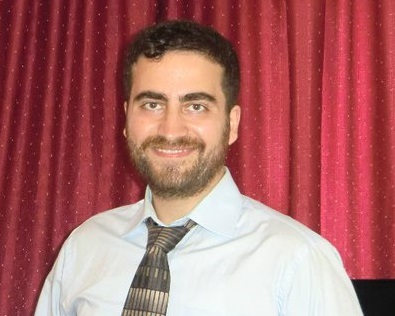What if, by inputting information about dementia and a patient into a supercomputer and crunching the data, a treatment team could quantify the individual’s risk of developing the disease?
And what if, based on the results, the team could diagnose which type and subtype of dementia that the patient might develop?
And what if the team could prescribe lifestyle changes and drug therapy specifically geared for that subtype to prevent it?

That’s the ambitious vision of the future held by Mohamad Habes, PhD, director of the Glenn Biggs Institute neuroimaging core at UT Health San Antonio.
Dr. Habes coauthored a paper published this year in the journal Biological Psychiatry that reviewed 29 studies of subtypes of multiple neurodegenerative diseases. These included Alzheimer’s disease, Parkinson’s disease, frontotemporal dementia and Lewy body dementia. The team also reviewed studies of general brain aging not associated with a disease diagnosis.
Clustering information to increase diagnostic power
“In this paper, what we show is that there are atypical presentations of early Alzheimer’s and other diseases,” Dr. Habes said. “If a patient is at risk to develop a disease, and we use MRI (magnetic resonance imaging) and PET (positron emission tomography) to image that patient, we can then utilize high-dimensional clustering to group the patient into a specific subtype.”
The MRI and PET technologies have existed for decades, but the data that can now be gleaned from each image is greater and computing power is commensurately higher. This is an age of machine learning and artificial intelligence. High-dimensional clustering is the concept of bringing multiple dimensions of information together to compute a patient’s disease state.
“Just think of two dimensions of a picture, extending to three dimensions, and then to more and more,” Dr. Habes said. “By doing that, you have a better insight, a better representation of the problem, when you have more information about it.”
Broadening the datasets
Building into the dataset all of the observations made in past studies — such as the observation that aggressive hypertension treatment might help prevent cognitive decline — is important. So is broadening the data to include populations including Hispanics, who have been significantly under-represented in research of Alzheimer’s disease and related disorders to date.
“High-dimensional clustering is a research area that is very hot,” Dr. Habes said. “Our paper summarizes the work that has been done so far, and we offer advice on how to go forward, combining different levels of data for research projects in the future.”
Guiding treatment
The bottom line is precision medicine, Dr. Habes said. “Not all people are aging in the same way, and there are a lot of factors that lead to different aging trajectories among individuals,” he said. “We will use neuroimaging together with machine learning as a tool to predict and hopefully guide treatment for Alzheimer’s disease and these other disorders.”
The Glenn Biggs Institute for Alzheimer’s and Neurodegenerative Diseases was established at UT Health San Antonio in 2017. The founding director is Sudha Seshadri, M.D., a leading Alzheimer’s disease clinician-researcher and senior investigator with the Framingham Heart Study.
Dr. Habes joined the Biggs Institute in 2019 from the University of Pennsylvania. His research is supported by National Institutes of Health grants. While the Biggs Institute neuroimaging core currently leverages the Texas Advanced Computing Center at The University of Texas at Austin, Biggs investigators are in the process of building the institute’s own high-performance computing system, Dr. Habes said.
Acknowledgments
The National Institutes of Health and other funders supported this work.
Disentangling Heterogeneity in Alzheimer’s Disease and Related Dementias Using Data-Driven Methods
Mohamad Habes, Michel J. Grothe, Birkan Tunc, Corey McMillan, David A. Wolk, Christos Davatzikos
First published: January 31, 2020, Biological Psychiatry
https://doi.org/10.1016/j.biopsych.2020.01.016
# # #
The Long School of Medicine at The University of Texas Health Science Center at San Antonio is named for Texas philanthropists Joe R. and Teresa Lozano Long. The school is the largest educator of physicians in South Texas, many of whom remain in San Antonio and the region to practice medicine. The school teaches more than 900 students and trains 800 residents each year. As a beacon of multicultural sensitivity, the school annually exceeds the national medical school average of Hispanic students enrolled. The school’s clinical practice is the largest multidisciplinary medical group in South Texas with 850 physicians in more than 100 specialties. The school has a highly productive research enterprise where world leaders in Alzheimer’s disease, diabetes, cancer, aging, heart disease, kidney disease and many other fields are translating molecular discoveries into new therapies. The Long School of Medicine is home to a National Cancer Institute-designated cancer center known for prolific clinical trials and drug development programs, as well as a world-renowned center for aging and related diseases.
The University of Texas Health Science Center at San Antonio, also referred to as UT Health San Antonio, is one of the country’s leading health sciences universities and is designated as a Hispanic-Serving Institution by the U.S. Department of Education. With missions of teaching, research, patient care and community engagement, its schools of medicine, nursing, dentistry, health professions and graduate biomedical sciences have graduated more than 37,000 alumni who are leading change, advancing their fields, and renewing hope for patients and their families throughout South Texas and the world. To learn about the many ways “We make lives better®,” visit www.uthscsa.edu.
Stay connected with The University of Texas Health Science Center at San Antonio on Facebook, Twitter, LinkedIn, Instagram and YouTube.


